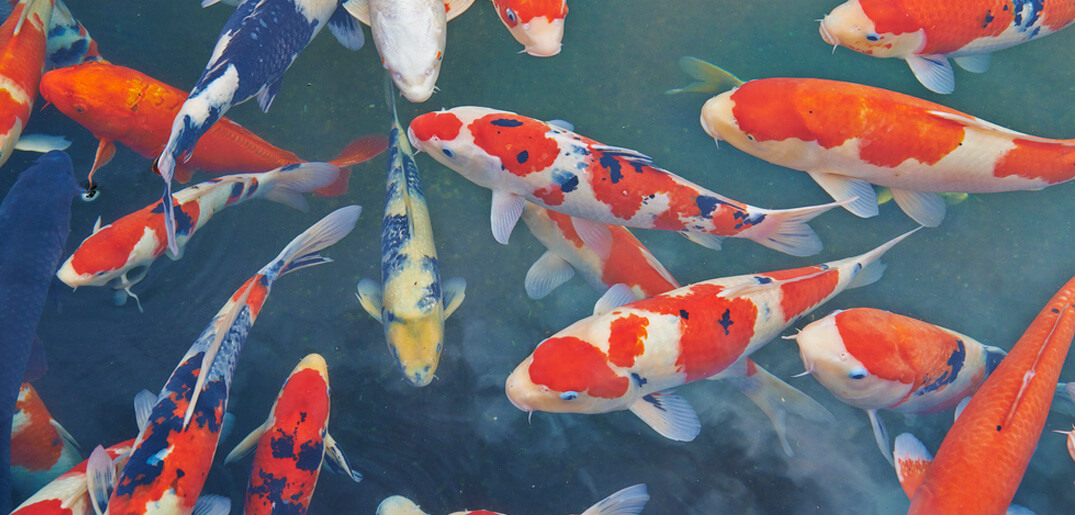Cleanliness is an absolute necessity for koi ponds, and the key to achieving this is optimal water quality. However, just having clear water doesn’t mean it’s okay. There are a number of other steps which should be taken, and below are some tips for keeping your koi fish pond water clean.
Never Overfeed Your Fish
When koi are given more food than they can handle, the food which remains untouched will decay. This degrades the water quality, both because of the deteriorating food and fish waste. Koi should only be fed once per day, for about three minutes, and anything which they don’t eat should be removed.
Make Sure The Plant Level Is Balanced
Many pond owners don’t know what percentage of plants should be present. During peak season, a koi pond should contain a maximum of 60 percent vegetation which covers the pond’s surface area. If you exceed this amount, oxygen deficiencies could occur in the evenings because of photosynthesis, where the plants will absorb the oxygen while emitting carbon dioxide.
Install High Quality Filtration
Pond owners should not be cheap when it comes to their filtration. The unit chosen should be of premium quality and must be compatible with the pond’s size. The thing to understand about most filter manufacturers is that they rate their products based on circumstances which are the most ideal, which is rarely realistic. Shop for your filter carefully and be sure it can handle your pond’s capacity and more. When cleaning and maintaining it, follow the directions of the manufacturer to the letter.
Keep Your Koi Population Balanced
Koi are large fish, and they need their space. If your pond contains over ten koi for each one hundred gallons of water, this means the pond is overcrowded. Not only will this increase stress among the fish, but it also leads to too much waste which will rapidly erode the water quality. Make sure your koi have sufficient space to move around in.
Make Sure Your Pump Is Adequate
A common mistake which is made by pond novices is selecting the wrong sized pump. An adequate pump is one which is capable of circulating all the water volume once an hour. The pump should also be inspected regularly to ensure there are no restrictions resulting from debris, and the water should never be pumped higher than is necessary. Each pump has limitations when it comes to flow, so it is important to be aware of them.
Cool The Pond Down During Summer
When the weather turns hot, koi ponds must be monitored regularly. This is because should the temperature surpass 75 degrees Fahrenheit, the pond won’t be able to maintain optimal dissolved oxygen levels. The best way to cool down the pond is through the usage of an aerator or aquatic plants and the shade they provide. Koi require oxygen for their survival, and if the levels fall too low they will come to the surface gasping to acquire it.


 Blog
Blog



